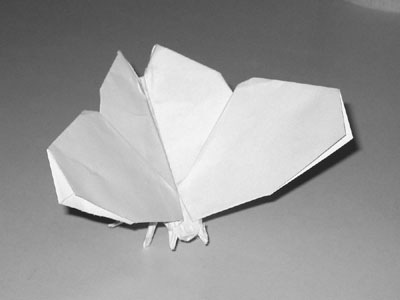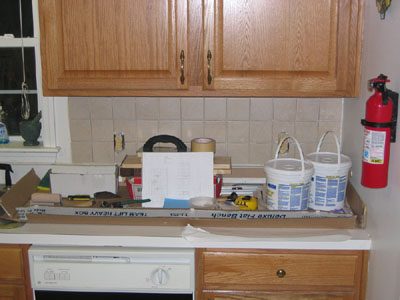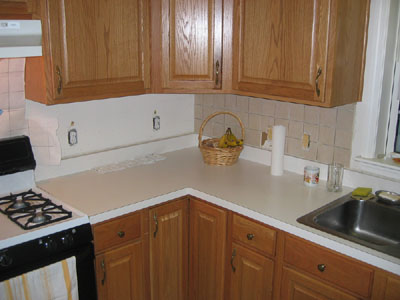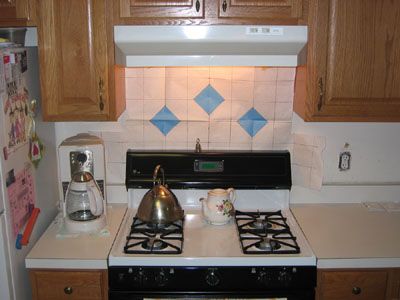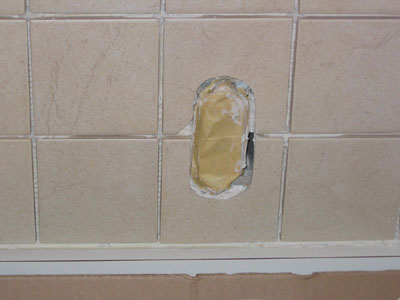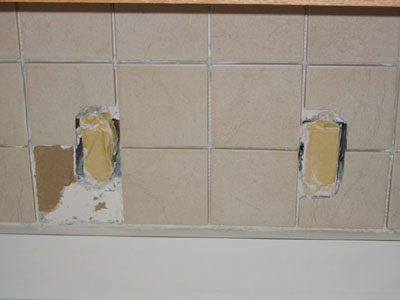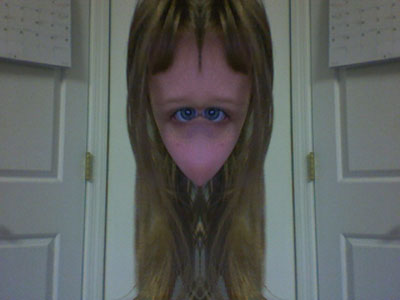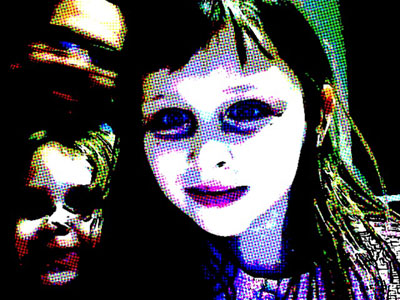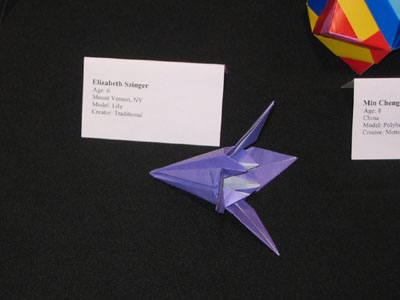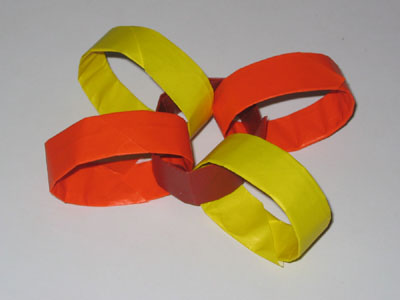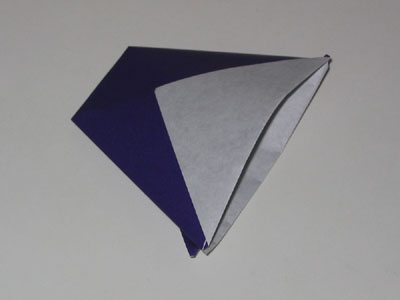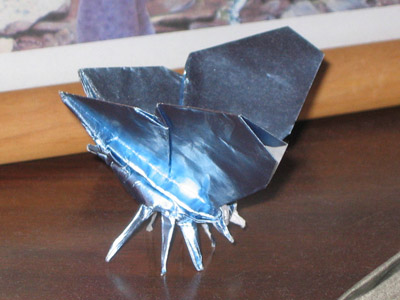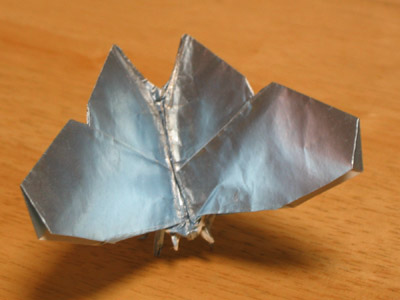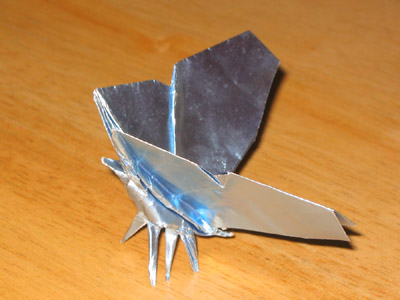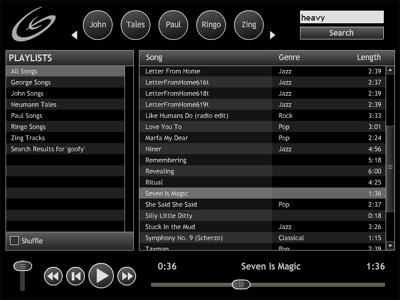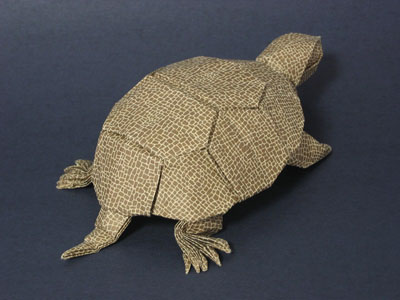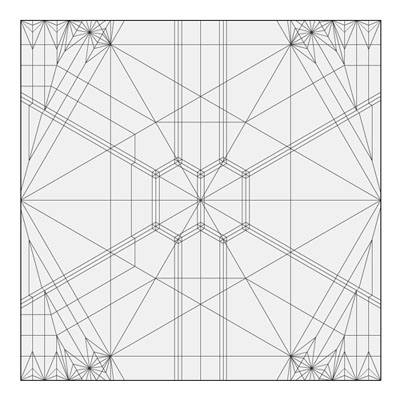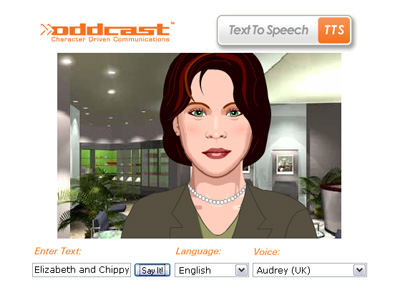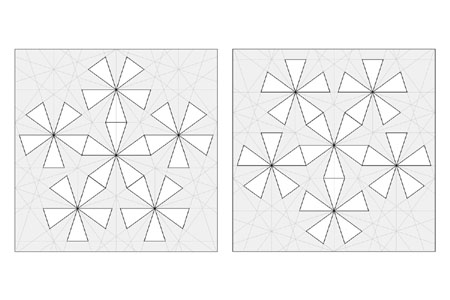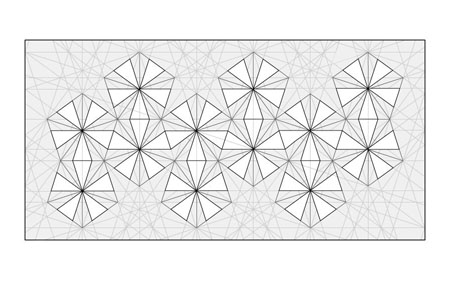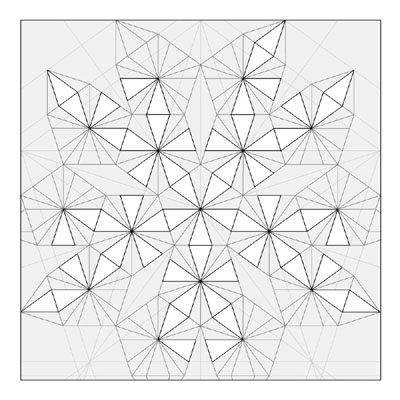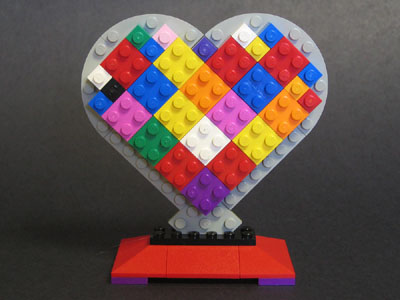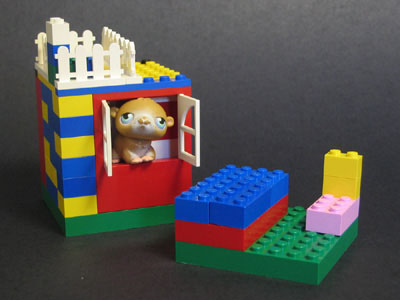Well it’s been a busy week. We got the tiling and grouting done in our kitchen, so we’re over the hump on that job, and it’s looking really nice. Still have the sealing, caulking and some touch-up painting to do, but each of these tasks is small compared to the work so far. I’ll take some pictures of the completed project and blog about it in a future post.
Meanwhile, the other bit thing is I finally completed diagramming my butterfly. I aim to do a full diagram of one original model a year. Because of the level of work involved, that’s about all I have time for, although I’ve been making more and CP’s of late. I blogged about this model previously, when I posted pictures of it. I mentioned at the time that I mainly developed it at last year’s OUSA. Well, I began diagramming it way back last summer, but then I got busy with work and put it aside for a while, and changed jobs around New Year, and so it took a while to get back to it.
And now here it is. I’d consider this an intermediate level model. I can make a nice looking one from a 6″ square, in about a half hour. The diagrams are only forty-something steps. It does have a rather advanced closed sink. People who don’t like closed sinks might like this one, cuz it doesn’t matter if you do a good job making the inside neat. I posted it online at:
http://www.zingman.com/origami/oriPics/butterfly/butterfly_diagram.swf
The diagrams are done in Flash, using (the current version of) my Foldinator tool. I’ve done a bunch of diagrams in Flash this way and it works pretty well for me. One of the things I like best is that the vector drawings scale up smoothly, so you can get a lot detail into the drawings and it won’t be lost. At some point I’m going improve the Foldinator to include a more generalized representation of the model, animations between frames, and eventually and authoring tool. But for now the next feature will probably be non-sequential access to the steps. In any event, the Foldinator project has taken a back burner for me of late, despite requests from the Origami community. Since I write software all day, and I’d rather spend my origami time making origami than writing more software. Now if I could get a grant or something, that might change the picture…
I submitted this model to this year’s OUSA Annual Collection, so if you want a printed version, look to see; it may appear in there.
Also, soon I will be updating my main origami page to include the Butterfly pics and diagrams, as well as other new models. I’m sort of waiting on that until I have a chance to take some nice pictures, set up with lights and all, rather than just the snapshots I’ve been posting here.
